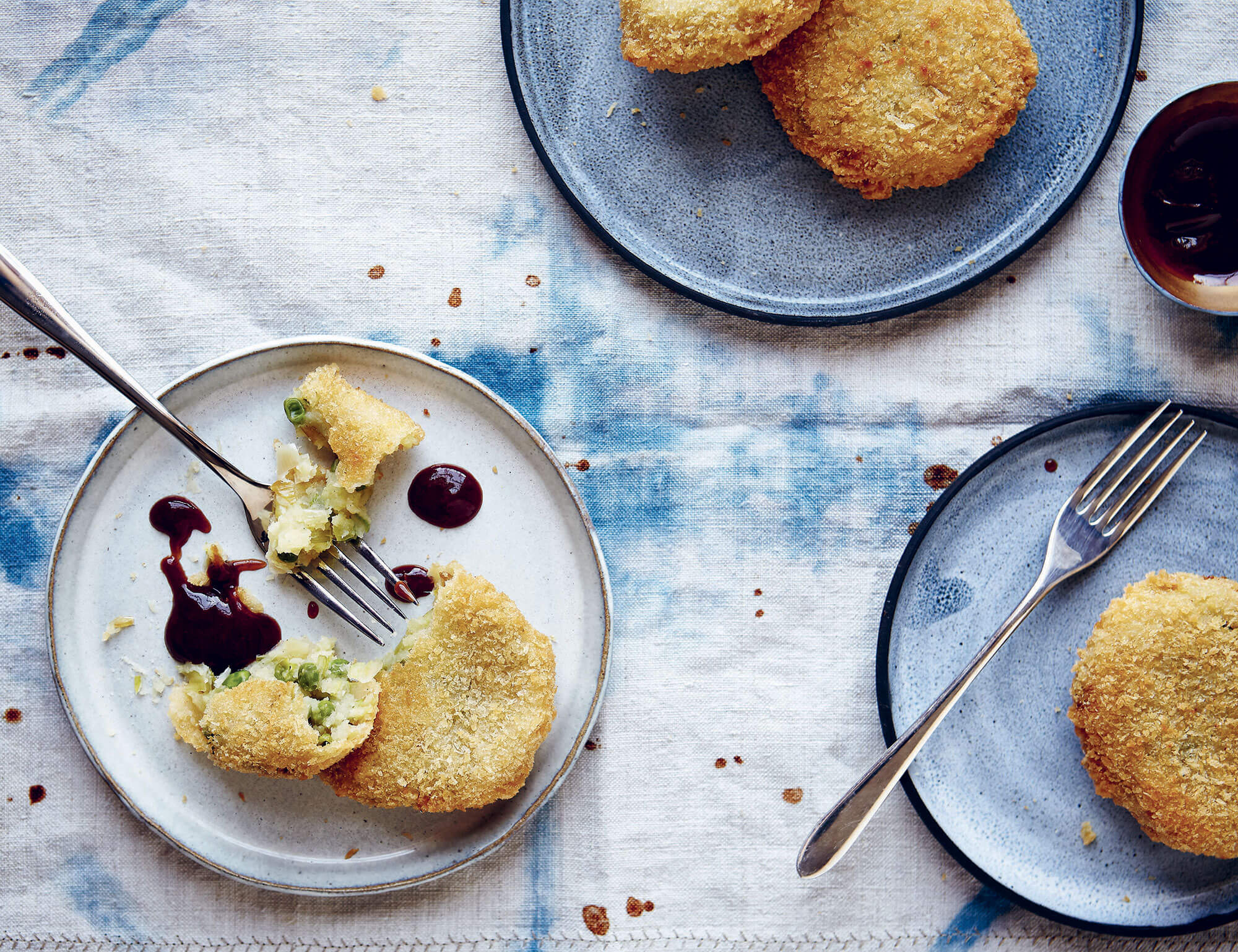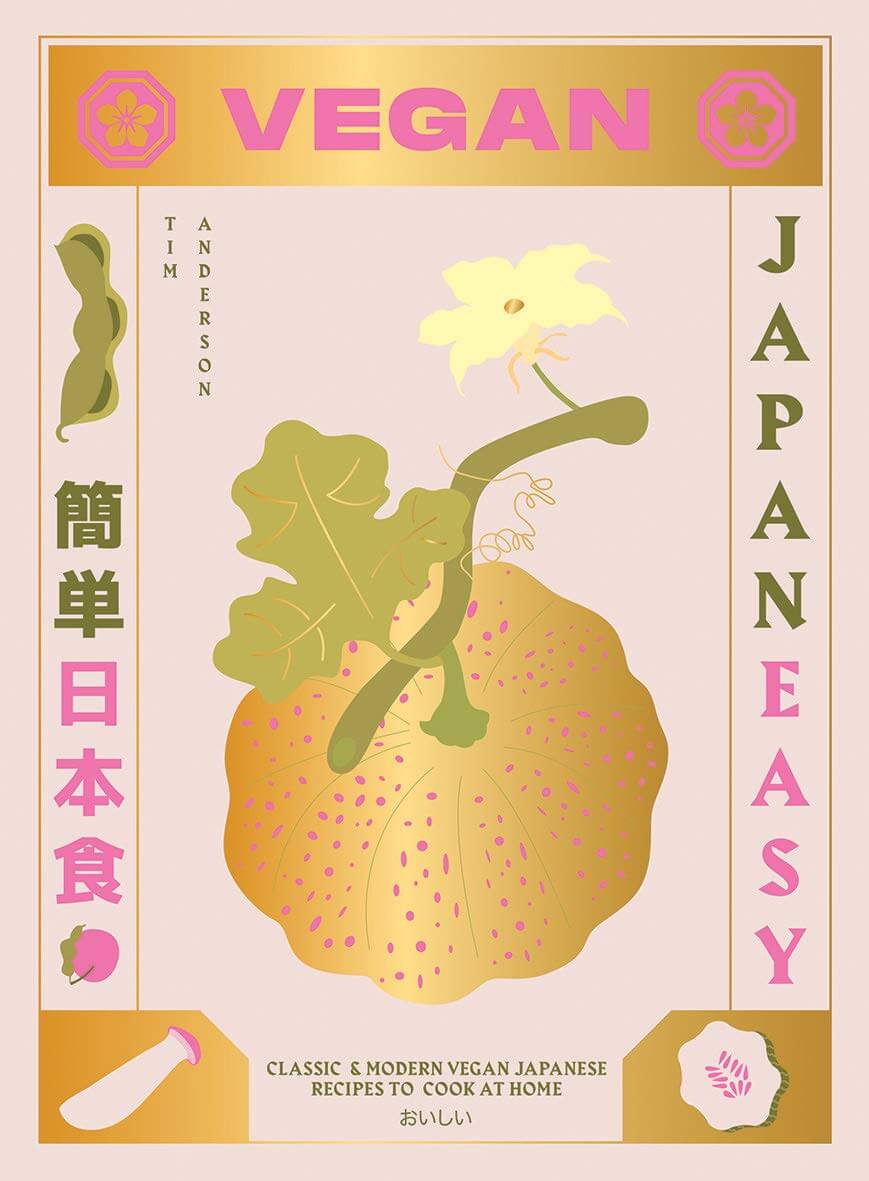Recipe for Sweetcorn Curry Croquettes by Tim Anderson
These crispy vegan snacks can be eaten as a main course or served as an accompaniment to a soup or a salad.

© Synchronique Éditions
In his book Vegan JapanEasy, Tim Anderson has compiled 80 Japanese recipes that contain no animal products. All of them have been created using a base of seven products that are easy to find in western supermarkets.
He shares his recipe for sweetcorn curry croquettes, drawing inspiration from the Japanese snack named ‘curry bread’, which is in fact a doughnut filled with Japanese curry. But, as the chef explains, while the doughnut makes it possible to eat a curry in one mouthful, the execution of the recipe proves a little more complex.
‘This recipe is nice, but it’s a bit tricky for a book called Vegan JapanEasy (maybe my next book will be called Vegan Japanslightlymoredifficult), so here’s an alternative: curry croquettes, which are perhaps even better because they’re more crunchy on the outside.’
Tim Anderson is a curry enthusiast, and this is clearly expressed in his recipes, with one for curry roux, the key ingredient for making curry, and another for curry rice, one of the most popular dishes in Japan.
Makes 16 croquettes
Ingredients
1 kg (2 lb 4 oz) floury potatoes, peeled and cut into 2.5 cm (1 in) chunks
2 tbsp oil
1 onion, finely diced
1 hot red chilli, finely diced
150 g (5 oz) sweetcorn (from a tin is fine)
2 heaped tbsp curry powder
1 heaped tbsp garam masala
Salt, to taste
Vegan egg replacer, equivalent to 8 eggs, prepared according to the manufacturers’ instructions, or batter for breadcrumbing
About 80 g plain (all-purpose) flour, for dredging
About 150 g panko breadcrumbs
About 2 l oil, for deep-frying (or less for shallow-frying)
Method
Boil the potatoes until fork-tender, 10–15 minutes, then drain and leave to cool slightly.
Meanwhile, saute the onions and chilli in the oil over a medium-high heat until they soften, then add the corn and continue to cook for several minutes until everything starts to brown a bit.
Add the spices and cook for another few minutes to make a thick paste, then remove from the heat.
Mash the potatoes and stir in the onion-cornspice mixture, and add a generous amount of salt.
When the mash is cool enough to handle, divide it into 16 equal balls and then squash each ball into a kind of oblong patty shape.
Lay the potato patties out on baking sheets lined with foil and transfer to the freezer to firm up for about 30 minutes.
Meanwhile, prepare the egg replacer or batter. Dredge the patties in the flour, then dip in the egg replacer or batter, and then the panko, ensuring they are all well-coated.
At this point the croquettes can be frozen on the baking sheets, or cooked straight away. (The cooking process is the same from frozen or chilled.)
Preheat your oven to 100C (210F). Heat the oil in a wide, deep saucepan to 180C (350F). Carefully lower the croquettes into the hot oil, in batches of 4–6, and fry until deep golden brown, for about eight minutes.
Remove with a slotted spoon, drain on a wire rack and keep hot in the oven with its door slightly open, until ready to serve.
Alternative method:
Preheat the oven to 200C (400F/Gas mark 7).
Pour enough oil into a non-stick, flat-bottomed frying pan (skillet) to come up to a depth of 5 mm and place over a medium-high heat.
Carefully lower in the croquettes and fry on each side for about five minutes, until golden brown.
Transfer the par-fried croquettes to a baking sheet and bake in the oven for 15–20 minutes, until a thin knife inserted into the middle of a croquette comes out feeling hot to the touch.
Vegan JapanEasy (2020), a recipe book by Tim Anderson, is published by Hardie Grant.
Tim Anderson is an American chef who won the 2011 series of MasterChef UK. Having graduated in 2006 from Occidental College in Los Angeles, where he studied the history of Japanese cuisine, he then lived in Japan for two years, in Fukuoka.
He now lives in London, where he runs two Japanese restaurants: Nanban Brixton and Nanban Central. Vegan JapanEasy is his latest book, following Nanban, JapanEasy, and Tokyo Stories.

© Hardie Grant
TRENDING
-
The Tattoos that Marked the Criminals of the Edo Period
Traditional tattoos were strong signifiers; murderers had head tattoos, while theft might result in an arm tattoo.

-
Paris, Tokyo: Robert Compagnon
With his co-chef and talented wife, Jessica Yang, Robert Compagnon opened one of the top new restaurants in Paris: Le Rigmarole.
 3:31
3:31 -
Chiharu Shiota, Red Threads of the Soul
Last year, more than 660,000 people visited the retrospective 'Chiharu Shiota: The Soul Trembles' exhibit at the Mori Art Museum.

-
‘Before Doubting Others, Doubt Yourself. Who Can Truly Say a Dish Isn’t What It Used to Be?’
In ‘A Non-Conformist’s Guide to Surviving Society’, author Satoshi Ogawa shares his strategies for navigating everyday life.

-
The Story of Sada Yacco, the Geisha who Bewitched Europe
Described by Dazed magazine as the first beauty influencer, she has been restored to her former glory since 2019.





